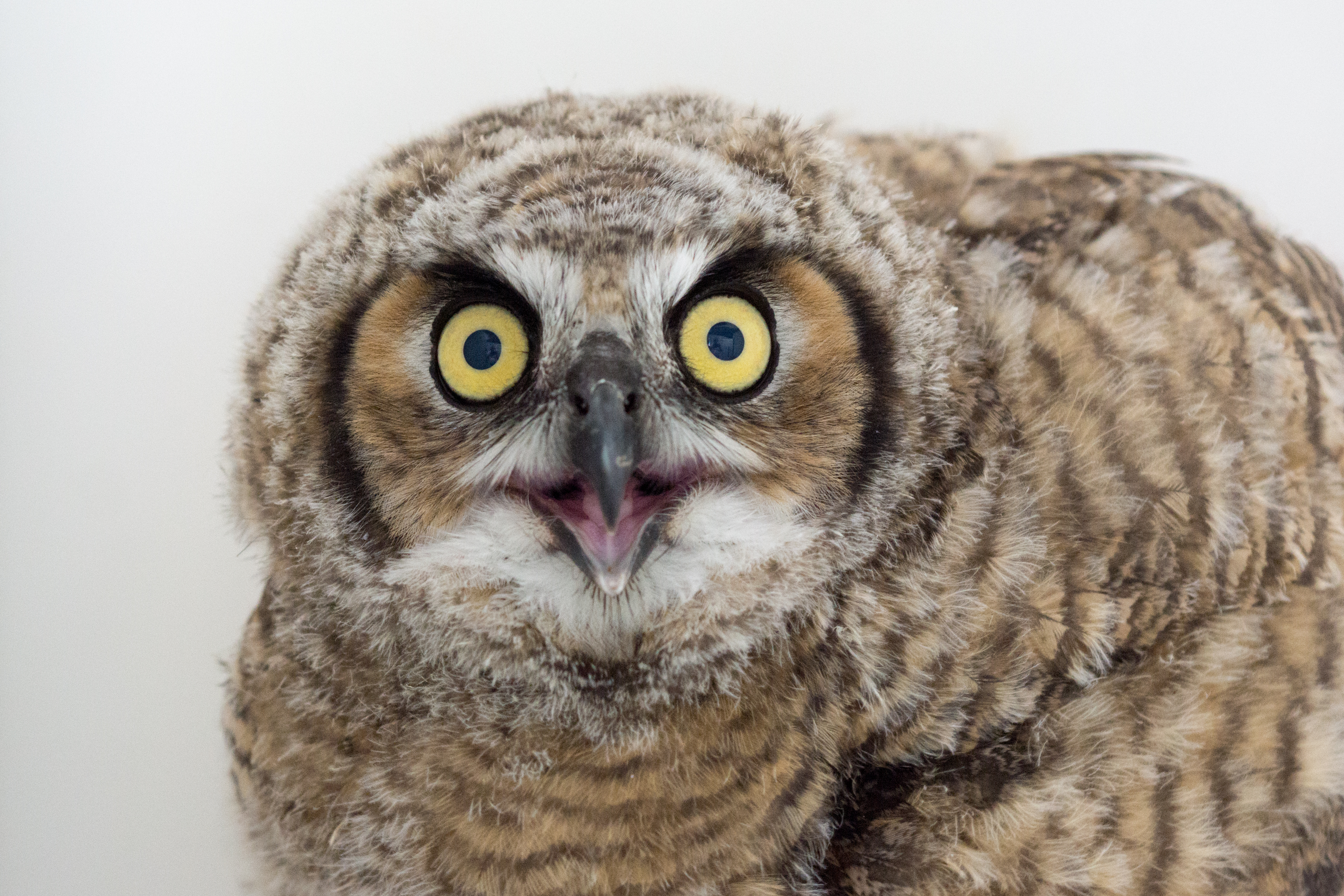With CWC, Love is Owl You Need
By Melissa Hartman, Administrative Assistant
Throughout recorded history and across many cultures, the allure of owls is enduring. Few other birds have inspired so many conflicting beliefs. Owls have been both venerated and feared, considered wise by many, thought to be obtuse by others, associated with witchcraft, medicine, the weather, and even believed to foreshadow birth and death.
Owls brought to the California Wildlife Center include Barn Owls, Burrowing Owls, and the California Great Horned Owl, which is by far the most common of our owl patients seen! So far this year, we have treated 31 of these distinctive-looking birds, also known as Bubo Virginianus, with their large ear tufts. Some people call this a “Cat Owl,” “Winged Tiger,” or “Tigers of the Air” because of their ears.
“Whoville” is the name we give to our outdoor Owl Aviary. Owls stay and are rehabilitated until they can be transferred and released. From Whoville there issues a large repertoire of sounds-deep hoots to shrill shrieks! This year, we took in our first owlet in February, testament the the great horned owl is one of the earliest nesting birds in North America, often laying eggs weeks or eve months before other raptorial birds. This species is strictly monogamous and solitary except for nesting.
What should you do if you find and owlet that has fallen from the nest and is clearly abandoned, or an injured adult owl? Baby raptors will need immediate care from a licensed rehabilitator. Get a box and follow the instructions on the CWC website’s medical emergency tab. Do not offer any food of water.
Please call our emergency hotline number, (310)458-WILD (9453) and contact hospital staff for authorization to bring in the owl or owlet. Remember, it is a federal offense to to keep native wildlife as pets. Their best chance at a new life may include a stay at the California Wildlife Center, and we are dedicated to making that new life happen!

